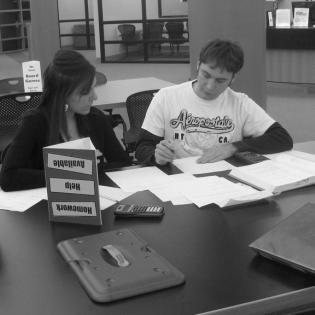Personal Giving Mission Statement
Learners look at nonprofit mission statements and then create a personal mission statement related to the impact they want to make as responsible, engaged citizens.
Focus Question: How does an individual use personal interests and strengths to impact the common good?
The learner will:
- define philanthropy as giving time, talent, or treasure for the common good. It may also include giving your testimony or using your ties.
- describe the purpose of mission statements and write one for their own purpose.
The class may hold a penny drive to raise money for a chosen cause. To hold the competition, each class or team competes against all others. Each team has a jar in a central location labeled with the team name and the charity they are raising money for. The idea is to earn the most money for your class or grade. In a penny war, teams try to collect the most pennies, and silver coins count against their total. This creates a competition where other teams try to sabotage the other teams by adding silver coins or dollar bills to the competitors' jars. The value of the silver coins counts against the total, so a quarter subtracts 25 points from a jar of pennies. You can have two winners: one winner is the team that has the most points and another winner collects the highest monetary value.
- www.civiced.org. Use this site for additional information about responsible citizenship.
- https://www.guidestar.org/. Use this site for information related to nonprofit organizations and their mission statements.
Instructions
Anticipatory Set:
Define philanthropy as “giving time, talent, ties, testimony, or treasure for the common good.” Brainstorm a variety of examples of giving time, talent and treasure for the common good. This guide on four types of service has many ideas.
Working in small groups, youth brainstorm descriptions of a socially responsible citizen. Give them 10 minutes to talk and then give time to have groups share the ideas with the whole group. Star the ones that mean the most to the whole group.
The Nonprofit Sector includes nonprofit organizations, volunteerism, and advocacy. Its primary purpose is the public good. It provides a vehicle for individuals and groups to make change in society and contribute to their communities.
The primary purpose of a nonprofit organization is to fulfill its mission (this is an organization’s answer to the question, “why do we exist?”). A nonprofit’s mission statement explains which public good activity is its focus. Examples of Nonprofit Mission Statements:
- Habitat for Humanity: “Seeking to put God’s love into action, Habitat for Humanity brings people together to build homes, communities and hope.”
- Boys and Girls Clubs of America: “To enable all young people, especially those who need us most, to reach their full potential as productive, caring, responsible citizens.”
- Ford Foundation: “To reduce poverty and injustice, strengthen democratic values, promote international cooperation, and advance human achievement.”
- San Diego Zoo Global: “Committed to saving species worldwide by uniting our expertise in animal care and conservation science with our dedication to inspiring passion for nature.”
Just as businesses and organizations have Mission Statements, individuals may also have a personal Mission Statement that reflects their views about being socially responsible citizens and guides them in making critical decisions that affect them and others around them. A mission statement clearly states who I am, who I will serve, what I will do, and how I will do it.
Here is an example of a personal mission statement: “As a responsible member of my community, it is my mission to use my connections and energy to promote equity and inclusion."
Have the learners create their own personal mission statement reflecting their beliefs and attitudes toward being a responsible citizen.
After they have time to write, they may meet with another learner to share and get feedback. They may also discuss what service projects they may do as part of their personal mission. There are some ideas here.
Philanthropy Framework
-
Strand PHIL.I Definitions of Philanthropy
-
Standard DP 01. Define Philanthropy
-
Benchmark HS.1 Define philanthropy to include giving and sharing; volunteering; and private individual action intended for the common good. Explain how a volunteer individual/group can act for the common good.
-
-
Standard DP 06. Role of Family in Philanthropy
-
Benchmark HS.3 Identify how subgroups and families in society demonstrate giving, volunteering, and civic involvement.
-
-
-
Strand PHIL.II Philanthropy and Civil Society
-
Standard PCS 01. Self, citizenship, and society
-
Benchmark HS.4 Describe and give examples of characteristics of someone who helps others.
-
-
